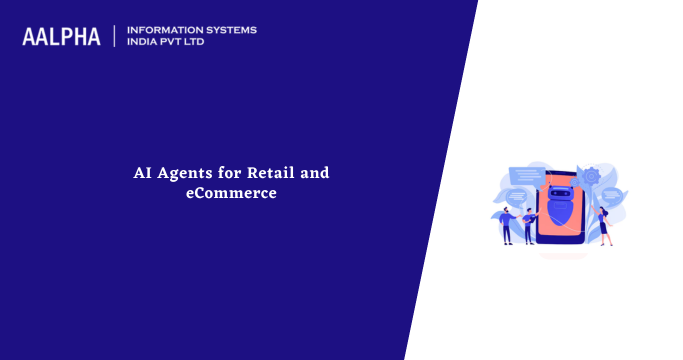Predictive analytics can help you anticipate customers’ needs throughout their buying journey – to help raise awareness, educate prospects and complete transactions.
It is old news to e-commerce, and marketing focused firms that significant business success thrives in the personalization of the client experience and this is proved by case studies too. By targeting your special offers and recommendations to the specific intent and needs of every buyer, you elevate the possibility and size of follow on sales and immediate sales. 2018 should be the year for you to explore fresh personalization opportunities in your company, off course from enticing reasons.
What is personalisation?
Personalization refers to a means to an end, timely and crucial client’s experiences that elevate customer retention as well as sales. In this article we will discuss a major area you may not have given a thought to yet; personalizing live client journeys as they are being unfolded in actual time, deciding about which clients you ought to be speaking with and choosing the appropriate people with the proper skills to communicate with them. The awareness stage as well as the decision stage of the buyer’s journey is very important too.
Personalization actually leans on efficient analytics that provides you with actual insights into prospects behavior; this post comes through the type of analytics required to upgrade customer live journeys.
Personalization
Most discussions on personalization are targeted primarily on product and content recommendations. For instance, your client is looking to buy hiking boots, then recommended analytics will say tents, socks, bug spray, etc. or whether the customer purchased shirts the previous year, maybe you highlight the most recent or newest tops, blouse, and shirt accessories and designs. And as we all are aware there is a London based retailer online that will suggest the best things “clued by your browser history”! These predictions are based on the relationships between purchases of a variety of goods across a lot of clients or across an individual customer’s buying history.
Recommendations of products are imperative, but if you want to personalize clients journeys you have to extend your approach to some other aspects of the customer experience. A whole lot of e-commerce sites have up to eight hundred numbers for clients to call when the need arises, and most other sites experiment with live chats. However, these days there is absolutely nothing personalized about none of these interactions.
Disjointed Communications Challenges
Modern technology has made room for video, voice, chat and even seamless telephone callbacks to be wholly embedded in the context of a mobile app or a website. Different sites have been experimenting with chat platforms in view of providing additional aid and assistance. However, the actual insight here is to consider all forms of communication as actually applied in the correct right online context.
The main demerit of the online marketer’s traditional phone model is that it works independently from the website; providing an entirely separate user experience with various precious information available to reps and clients as contrasted with the site (where a greater portion of your investment is used). Customers that call in have to ” repeat again,” stating data and information he has already provided to bring the company’s report up to date. Or even worse, that need to speak to some annoying automated response systems on the way.
Furthermore, deciding when or whether to contact the company is left solely to the clients, who most times leaves without ever putting a call across or eventually call when they aren’t an option. Why it’s hard for them to call? They dislike the annoying voice response systems and spending precious time on phone queues; in this case, it’s straightforward for them to search the internet and locate your competitors.
If truly desire to speak with your potential customers at the right time for the right reason, then need the wide range of communication options to be present, so your company gets to select the most appropriate media to utilize. It may be video for greater value, one on one trust based communication, like financial discussions, or may be the voice option for a greater sophistication in dialog based interaction, like detailed goods and services comparisons that you need to close with a single call, or it may be a live chat for fast advice communications where elevated volume efficiency is paramount.
A big merit of the new contextual communication incorporated into your website is that you are aware of precisely what your traffic has been viewing. You could track their journey thus far via activities, pages and purchases, comprehend what exactly they require, attend to the right clients more personally. The communication technology of these days could do much more for e-commerce websites than just the local phone service.
Your entire company’s model is already mobile and online, so upgrade your actual time communications model to be actively online as well.
Want to learn more about how to advance your website and start generating leads?
Contextual To Predictive Communications
Very crucial, you get to make great choices about the customer journey map that mostly requires your assistance where Predictive communications provisions could be utilized to target and focus on the quality visitors.
Being sensitive and smart about the proper client opportunities (the ones that are as we speak predicted to have the highest value) is the secret to driving greater sales revenue and customer satisfaction. So, treat live client communication as a greater chance for personalization.
Since your staff are the most expensive, and best content creators, it’s only wise to personalize how their creations and ideas get applied. Given that they are a limited resource, you ought to make predictive decisions on which clients will benefit them to talk to.
Simply applying these techniques to personalize customers journey will improve to a large degree the client’s experience for every online visitor; All live moments should be handled as a personalization opportunity. You could forehand decide on which consumers to give the chance to speak to in different ways, and which skills are required for the sales associate who communicates with them.
Track individual client’s journey within your mobile app or site, looking at key attributes of each online visitor and the journey pattern they adopt. That little data provides access to fresh information. For instance, you could learn from past customer’s journey data on the efficiency of previous communications. Did they close a deal? Was the dialog engaging? Did they drive revenue? Predictive Analytics could then be incorporated to every new client journey so to proactively make offers to communicate to the perfect prospects and match them with ideal sales associates who can close the deals.
To make this procedure ideal for clients and wholly contextual for the sale associates. Use live live internet based communications, including video, voice, screen sharing, chat and telephone call back where required. As a result of these conversations occurring directly within the mobile/web experience, the whole journey context of what the clients have seen, what info they have inputted, or goods placed in their cart could all be made with immediate effect visible to the sales associates.
The outcome is a contextual a different personalized live interaction between best clients and the proper individuals. Being aware of a client’s journey before making a purchase means that an agent can discuss the customer’s interests and requirements, a different then pick the best offers and sell-ups to close a sale finally. So, lastly, it is evident that Predictive Analytics to personalize clients journeys makes for more relevant and richer experiences that would leave every client excited and satisfied and also come back for more.
If you use a predictive analytics software for the data collected, you will be able to view statistical models for your data sets and decide on your next moves (for example what you will post in social media or the content of your campaigns) in order to influence the purchasing decision of your visitors.





Share This Article:
Written by:
Stuti Dhruv
Stuti Dhruv is a Senior Consultant at Aalpha Information Systems, specializing in pre-sales and advising clients on the latest technology trends. With years of experience in the IT industry, she helps businesses harness the power of technology for growth and success.
Stuti Dhruv is a Senior Consultant at Aalpha Information Systems, specializing in pre-sales and advising clients on the latest technology trends. With years of experience in the IT industry, she helps businesses harness the power of technology for growth and success.